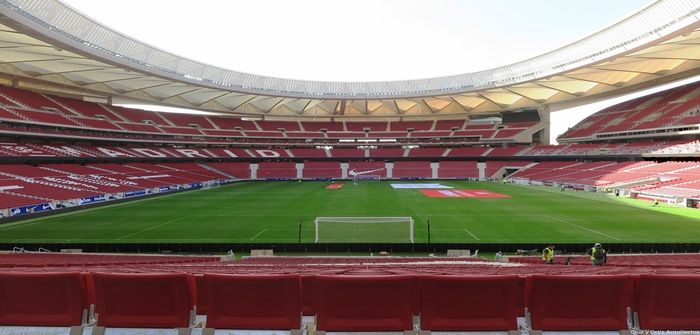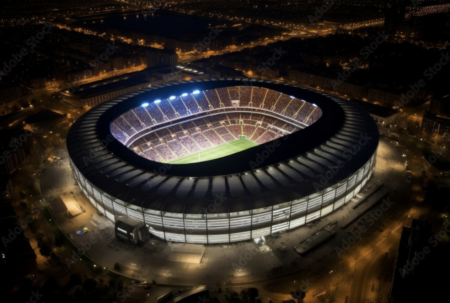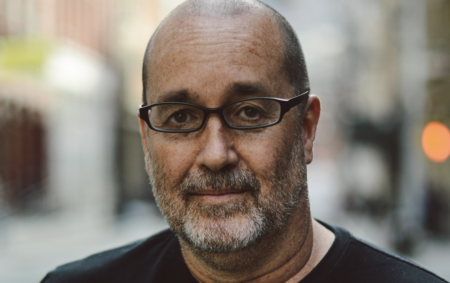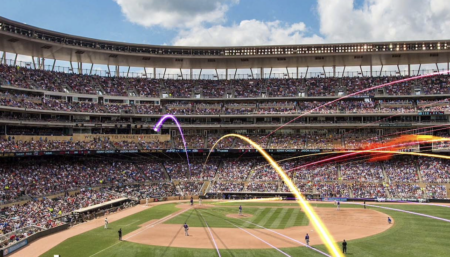Stadia speaks to Cellnex’s Piercalo Giannatassio about the company’s role in installation of the communications infrastructure at Wanda Metropolitano.
The latest issue of Stadia features an in-depth feature on the new Wanda Metropolitano stadium, home to La Liga soccer club Atlético Madrid in Spain. As part of an ongoing series of interviews with companies that worked on the project, Stadia speaks to Cellnex Telecom’s Piercalo Giannatassio about the challenges posed by the stadium’s state-of-the-art, multi-operator communications system.
How did Cellnex come to be involved in the Wanda Metropolitano project?
Cellnex has knowledge and expertise from deploying projects in stadia in Italy and it initiated contacts and presentation of its solutions to the different technical mangers of Spanish football clubs. Our proposal was quickly attended by Atlético de Madrid [for] the construction of a new stadium, where they wanted to have the latest technological advances available.
Right now, the new Wanda Metropolitano stadium has all the best equipment at a technological level – especially in terms of mobile phone coverage, with the new DAS system – in all of Spain and Europe. Cellnex’s presence in the audiovisual market as an operator of broadcast services in Spain allowed the company access to the CTOs of the main clubs in the Spanish football league.
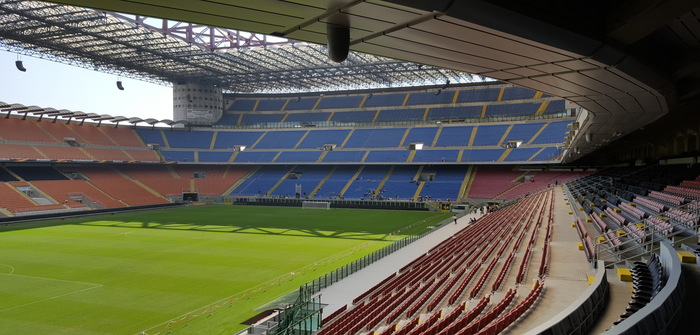
What expertise does the company have that, in your opinion, made Cellnex the right partner for that stadium project?
Cellnex’s experience through its 100% owned company CommsCon in past deployments was a key element to support the know-how Cellnex would bring in as a partner to provide DAS services. CommsCon had deployed at stadia such as the San Siro and Juventus’s Allianz Stadium, as well as Mediolanum Forum and [the Stadio Olimpico] – the latter was being deployed at the time we engaged in conversations with Atlético de Madrid.
Can you talk us through the timeline? When did first meetings happen, when did work take place, when was it completed …
Meetings started back in November 2016. Provisioning began in May 2017 and the beginning of the works took place at the end of July 2017. The first match took place September 16, 2017, so deployment and commissioning was achieved in just one-and-a-half months.
What were the biggest challenges of this project, and how did you overcome them?
The biggest challenges were the timing, availability of equipment and installation, weight limitations linked to architectural design and solution concealment. In terms of the weight, the challenge was to install the best performing solution at an optimized location (inner ring), which presented a challenge in terms of weight allowance.
In addition, the need to provide a solution with minimal visual impact was also always part of Cellnex’s design – meaning that equipment [had to be as integrated as possible within] the new stadium’s structure.
What are the advantages of being a neutral operator, for the stadium owners and for the fans?
The neutral host model is beneficial for all engaged parties, including stadium owners and fans. Cellnex plays the role of single point of contact and provides turnkey solutions. That is beneficial for stadium owners, since they do not have to worry about dealing with all mobile operators, thus reducing their operational burden. Advanced multi-operator systems deployed by Cellnex are shared by all operators.
That way we reduce TCO and minimize the aesthetic impact of the installation in the stadium. Advanced multi-operator solutions deployed and managed by Cellnex make it possible for all fans to enjoy the best connectivity. No matter who is your operator or service provider – all operators and users share the same system and Cellnex guarantees high quality for all of them.
Can you tell us a little more about testing of the Wanda installation? How long did it take, what were you testing, and what did you learn about the system?
Testing of such a complex system is a thorough process. Just think about the precision required for a system that has 250 antennas, each of them radiating its own signal that has to provide outstanding connectivity without interfering with each other. The basic parameters that are considered are throughput (speed), signal quality and call success rate. Fine-tuning of the network was carried out during several matches and the whole testing process took around one month.
How has the system been performing so far? Are the stadium owners happy?
Performance is outstanding and the high quality standards that were defined in the project are fully met. Now we are talking with the club about the possibility to extend the coverage to areas that were not initially considered within the scope of the project, such as technical areas, warehouses and so on.
What do you feel is the greatest achievement of your involvement in the Wanda stadium?
We only had one-and-a-half months to deploy the whole system. That was a very short time for such a complex project. Many stakeholders were involved and pressure was high. Operators also had little time to install their equipment.
Furthermore, the stadium was under construction, so the deployment of the equipment was conditioned by the works that were simultaneously being carried out. But coordination was great and after a great effort everything was ready for the opening.
January 10, 2018
Images courtesy of Cruz y Ortiz Arquitectos (Wanda Metropolitano) and Cellnex (San Siro)


